For 575kms the flat arid bush imperceptibly changed its landscape to hilly outcrops, some classified as ranges in the distance, of raw red sandstone – iron rich rising out of a perfectly flat tableland in between. We were heading into mining country where instead of plunder and pillage of the seas of beautiful fish white man turned his eye onto the land for some of the richest deposits of iron ore in the world. Hamersley Iron's operations in the Pilbara are integreated across eight mines, a dedicated heavy haul railway and port facilities in Dampier. From the enormous open cast at Tom Price to Karratha and Dampier the millions of acres of originally Aboriginal land was dedicated to make two huge companies, neither Australian owned, even huger. With the estimated value of $190 mdpd (million dollars per day) we're not talking small fry here and I wondered what royalties were paid to the Aboriginal communities for the 'use' of their land, after all they were there first! These often sacred sights of cultural significence...my understanding the answer in none, null, zero.
Our entry into Karratha after a long hot drive was a welcome of salvation - we would be saved by any number of fundamentalist Christian sects – with pole position taken by the Jehovas witnesses who sported their meeting hall proudly on the great north highway towards Karratha town centre. Then as we ventured along the Karratha north circular various side streets promised us secondary deliverence with sign posts to the Church of the Latter Day Saints (Mormons to you), the Seventh Day Adventist church, the good ol' Sali Army and last but by no means least the Catholics with a modern monstrosity pointing a pinnacle of hail mary's to the sky. Thank god! Atonement and retribution was close at hand – those mining sinners souls must be in desperate need for a whole lot of saving. Its funny isn't it that when you come upon a group of incredibly hard working fellows chasing the filthy dollar you always find some nutty types who want to save them from that murky fate? Ploughing on around several roundabouts we happened upon our little Bethlehem for the next few nights – Karratha Caravan Park. The reportedly upmarket Pilbarri Tourist Park had already decreed 'no room at the inn' and the alternative was KCP as we liked to call it who promised on the phone they would squeeze us in between a couple of their vans if we were lucky! We were – their address was Karratha Light Industrial estate – very salubrious but beggars and all that. Multi skilled Jazz greeted us to the Merthyr Tydfil of Western Australia, answered the phone three times, sorted some post for 2 large, very long bearded chaps who may have been in the band ZZ Top their flourescent jackets covered in a light red dust ,and told off her kids while handing me the a key to the toilet – 'Ladies is always kept locked love, you'll need this!' Mmm, an unsettled feeling was slowly creeping into my boiled dry subconscious – why did the ladies have to be kept locked? The answer didn't take long to dawn judging our new surroundings - we had booked into a miners residential camp for three nights and they might want to take a peek! I recalled the evangelists along the route to the camp – who am I to sit on the moral low ground? I would have thought brothels more useful in frustrated male environments, not God. After all wasn't Mary Magdalene….?
We had arranged to take a guided sail trip round the archipelago and land on East Lewis island where William Dampier had all those years ago with a fellow WD enthusiast Brad Beaumont and had to leave from a jetty in the town of Dampier a few kilometres away, so we made a hasty retreat from our new home to give the family namesake a reccy. We entered Dampier the town, created and named in 1966 as the new service port and accommodation to support the mining conglomerate Hammersley Iron and later Woodside Gas, now read Rio Tinto and Shell.If you look past the enormous tankers that hold 200,000 tons of iron ore and can be filled in 12 hours using the 2kms of rail trucks (behind one strong little engine), the gas terminal and the port you will gaze in wonder at the beauty of the Dampier Archipelago, low slung islands fading into the distance dotted in the sparkling sea like lonely lily pads on a pond. Everything was flat and quiet and we watched a stunning sunset over the bay, nearly tripping over the vibrant red Sturt pea (Willdampia Formosa) growing wild in the car park – was this some sort of sign?
The next landing point of the William voyage in 1699 was to journey north from Sharks Bay where the Roebuck crew 'jogg'd along' using 'favourable winds' the west coast of New Holland and found themselves threading the leaky ship carefully through the Dampier Archipelago named by French explorer of note, Louis de Freycinet over a century later in 1803 as an honour to this remarkable voyage of discovery. At first William anchored the Roebuck off Enderby Island and then on 1st September weighed anchor off East Lewis Island, took a tender with some of the crew and landed at what is now called Pirates Cove on East Lewis Island. Once more his curiosity and passion for natural history took him away to that different place he so often went when on dry land and he voraciously gathered specimens, recording their look, smell and taste and wrote himself into western natural history books. Modern research recognises that the 'stones all of a rusty colour, and Ponderous' are the natural heaps of dark red boulders lying on the shore today – Gidley Granophyree, an igneous intrusive rock approximately 3000 million years old. His gatherings included the species of Olearia, currently known as Eurybia dampieri; probably the Green Bird Flower (Crotalaria cunninghamii) named Bibarn Bibarn by the Ngarluma people who for thousands of years, unbeknownst to him and western naturalists for 250 years thereafter, used it in a solution as an eyewash for sore eyes, or soaked in a wet cloth and applied to the head to relieve headaches, swellings or pain; the common blue tropical plant Northern Bluebell (Trichodesma zeylanicum)aboriginal name Warrawanggan Jabajaba which they used either as a diuretic or to bathe sores once boiled in water.
We had the great fortune to sail to East Lewis with Brad and a curious crew of friendly folk on board the Spinifex Spray a double masted lugger, sporting the skull and crossbones me hearties! For Brad was another of those curious native Australians I keep meeting - a complete Dampier nut! How lucky am I to have so much interest and knowledge shared by people who are truly passionate about my extraordinary ancestor as I am. And I have to say Brad is the nearest thing to a bucaneer sea-dog you are going to meet - he has all the character and stories of a pioneering explorer having spent much of his life helping other countries while in the army and in other guises. He is a book himself - and I hope he takes a moment to record his adventures one day like William did.
We stepped onto the beach at East Lewis and it was exactly as William described - a tingle shivered down my spine. Brad knew this place well and showed us to the memorial the local school children had built for the William Dampier tricentenary in 1999. Just above the beach on one of the red ponderous rocks Willam referred to was some clear extraordinary rock art - maybe preceding Dampiers visit or not, another magical symbol of the indigenos 'owners' of this land.
We had a wonderful cooling swim, a hearty lunch and beers were had by all. On our return we stopped on Sams island, where an unusual characterful Serb had lived in a self built fort and where he is now buried. Brad is involved with the upkeep of this beautiful place, an island of independence in a corporate landscape of huge (mostly offshore) mining companies. Sam arrived in Australia and worked in the mines and eventually moved to he isand in sight of the port, already a reasonably large operation. He built himself a house to live in, a castle and a kitchen to cook in. When he retired he moved here permanantly and the palm trees he had planted many years before served his shady patch where he sat and surveyed his territory. An attempt was made to evict him but it failed ad he died and was buried on his plot. It commands beautiful views of the bay and it is still tempting to ring the bell Sam installed to announce your arrival to the birds, lizards and other creatures which live in his shaded garden.
Friday, 3 August 2007
Subscribe to:
Post Comments (Atom)


























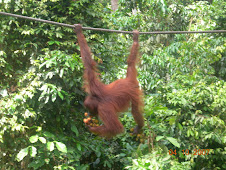


























































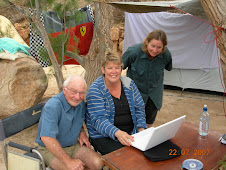





























































































































































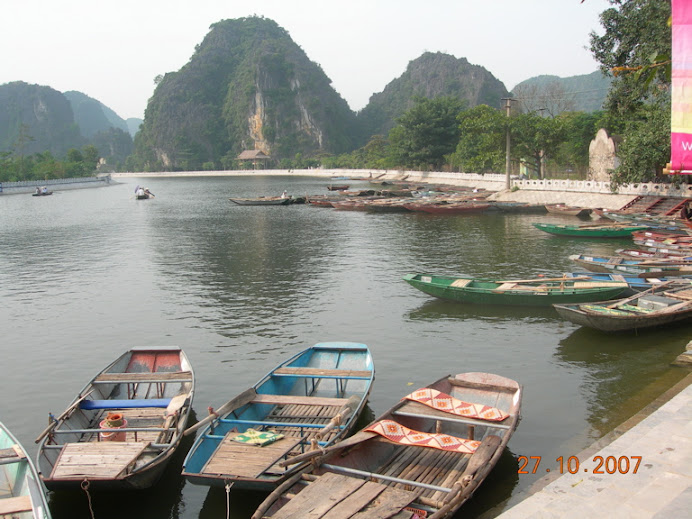

































































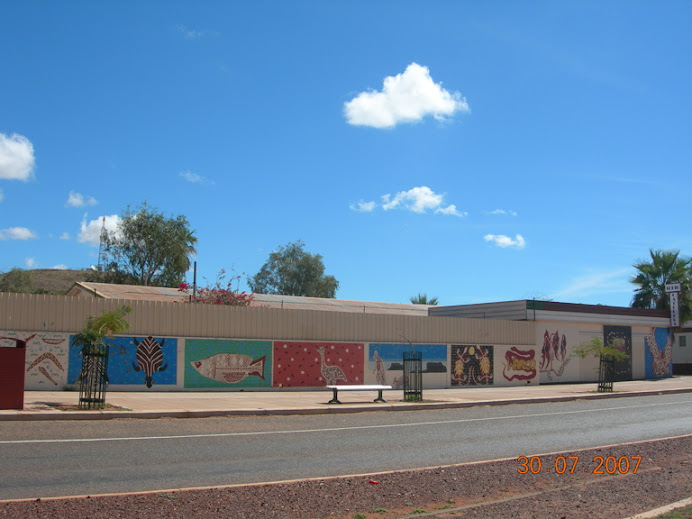







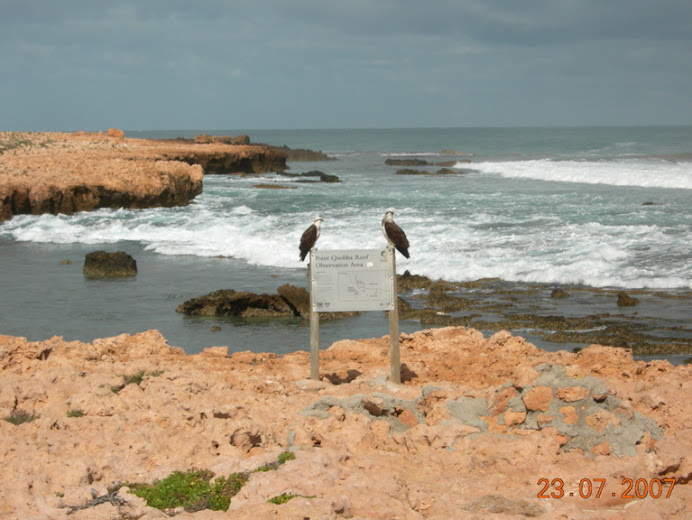




















































































































No comments:
Post a Comment